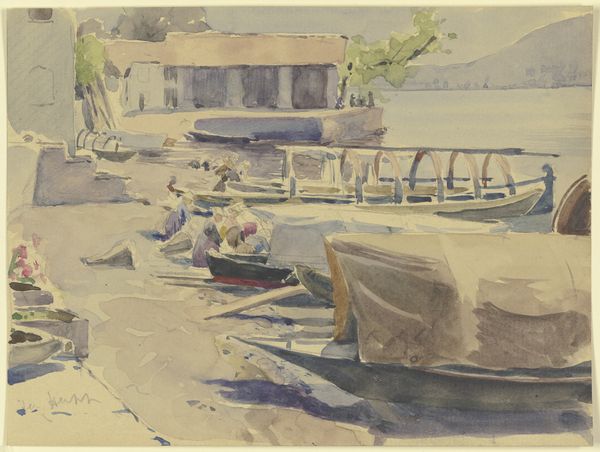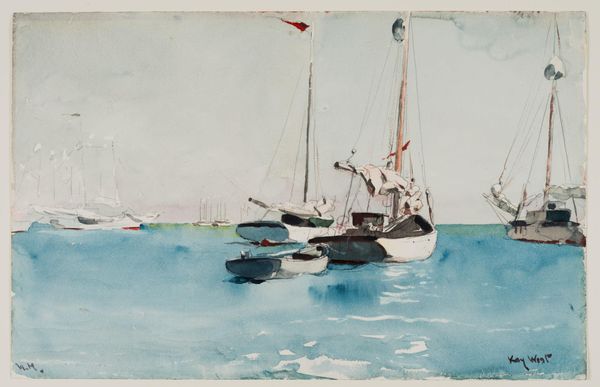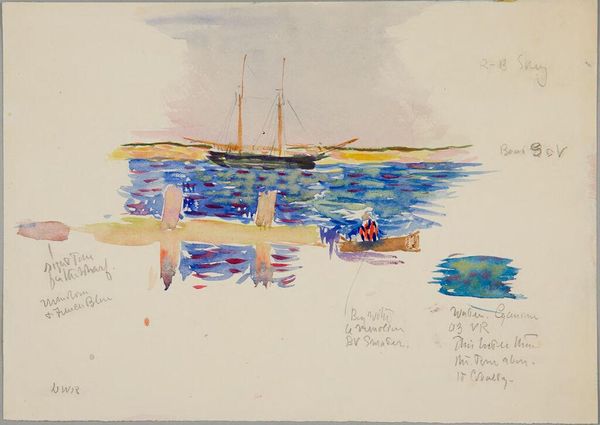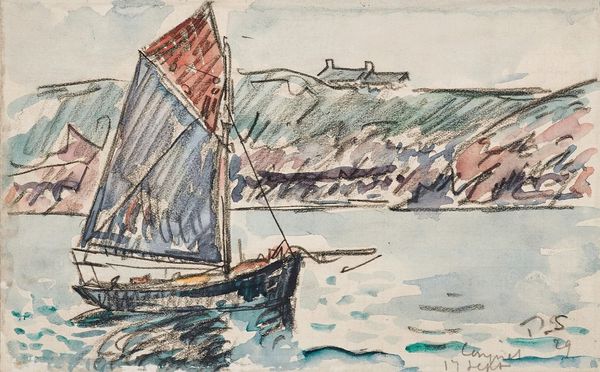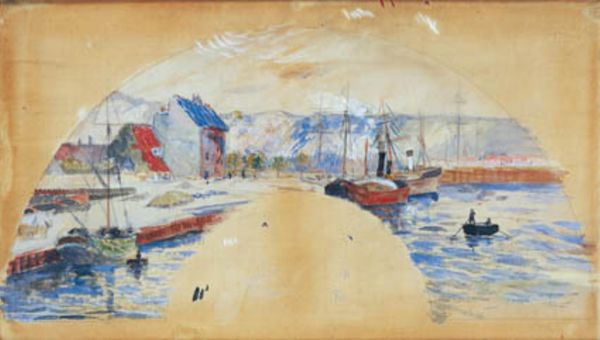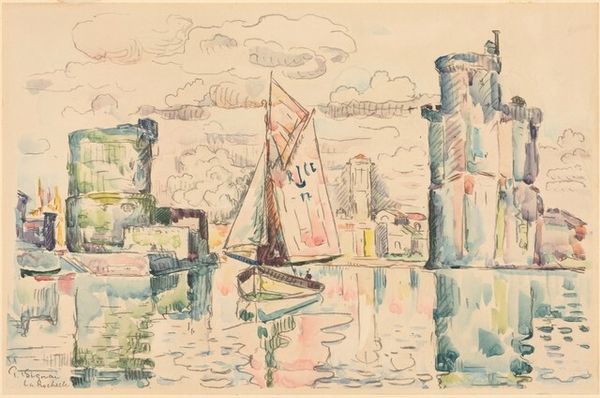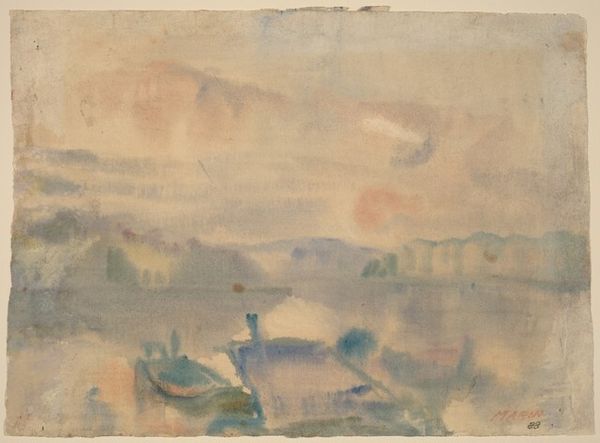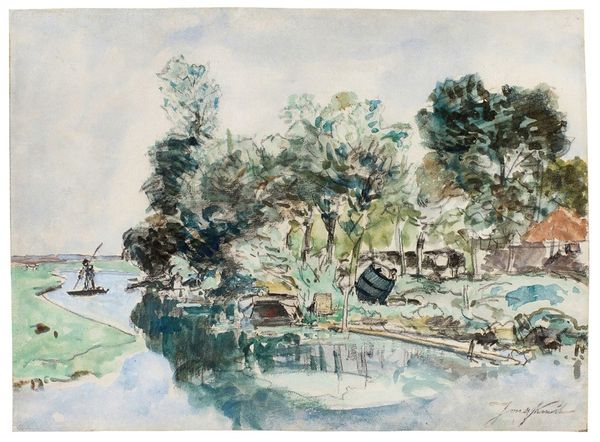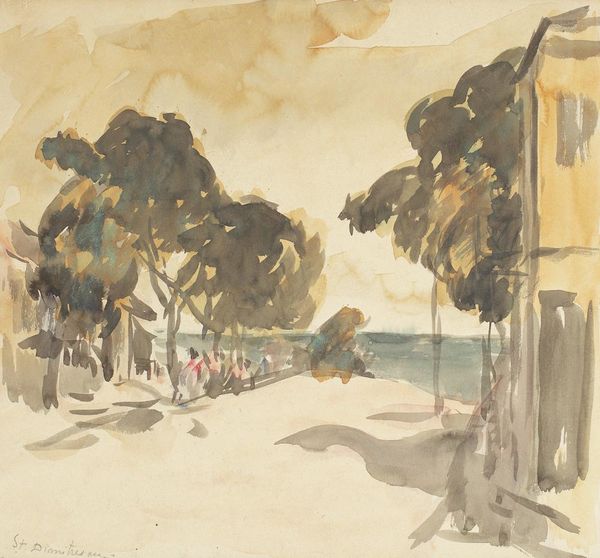![Harbor with Sail Boats [verso] by Mark Rothko](/_next/image?url=https%3A%2F%2Fd2w8kbdekdi1gv.cloudfront.net%2FeyJidWNrZXQiOiAiYXJ0ZXJhLWltYWdlcy1idWNrZXQiLCAia2V5IjogImFydHdvcmtzL2FkZDEwOTQ1LTNhYTctNDViZC1iODc0LTdhMmQ5NjIxN2IyOS9hZGQxMDk0NS0zYWE3LTQ1YmQtYjg3NC03YTJkOTYyMTdiMjlfZnVsbC5qcGciLCAiZWRpdHMiOiB7InJlc2l6ZSI6IHsid2lkdGgiOiAxOTIwLCAiaGVpZ2h0IjogMTkyMCwgImZpdCI6ICJpbnNpZGUifX19&w=1920&q=75)
drawing, painting, watercolor
#
drawing
#
painting
#
impressionism
#
landscape
#
watercolor
#
cityscape
Copyright: National Gallery of Art: CC0 1.0
Mark Rothko made this harbor scene with sail boats using thin washes of oil paint on paper. The paper itself has a visible texture, subtly influencing how we read the scene. Notice how the watery consistency and application of the paint imbues the depicted harbor with a sense of fluidity. Look at how the strokes are loose and gestural, applied in a manner that blurs the distinction between objects and their surroundings. Trees, buildings, and boats are all evoked with the same delicate touches. Rothko clearly engaged with the traditions of landscape painting, but he reduces the scene to its essential colors and forms, hinting at a transition toward his later, more abstract style. By engaging the language of material, we can see how Rothko was testing the boundaries between representation and abstraction. He understood the expressive potential of his chosen media, and the effect this has on his audience. The painting's value lies not just in its composition, but in the artist’s unique manipulation of materials.
Comments
No comments
Be the first to comment and join the conversation on the ultimate creative platform.

